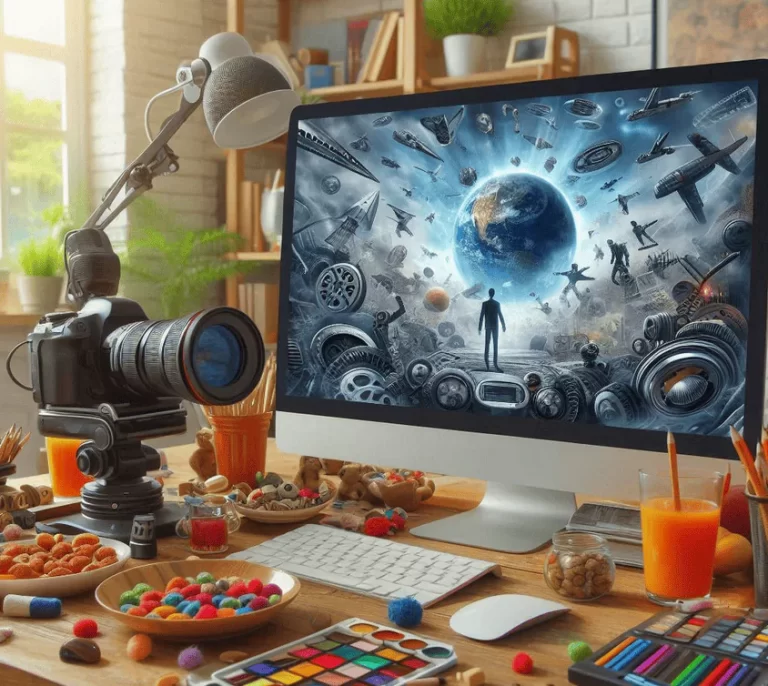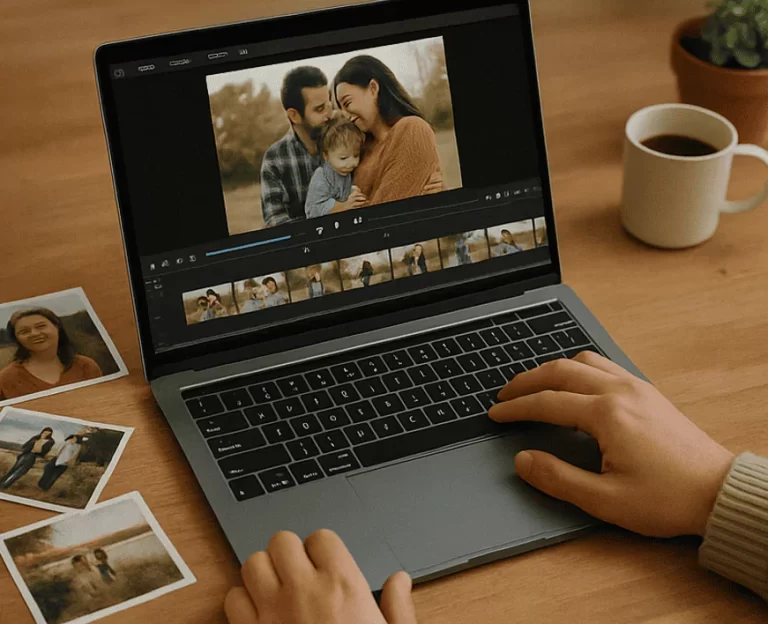
Photo editing In the digital age, where photos capture every fleeting moment of life, photo editing has become an indispensable tool for enhancing images and creating striking visuals. Whether you’re a professional photographer or someone who simply enjoys capturing memories with a smartphone, mastering the art of photo editing can elevate your images from ordinary to extraordinary. This guide delves deep into the techniques, tools, and tips you need to unlock the full potential of your photos and refine them to perfection.
The Essence of Photo Editing
At its core, photo editing is the process of altering and enhancing images to achieve a desired effect. It goes beyond mere cropping or adjusting brightness and involves a range of techniques, including retouching, color correction, and applying creative filters. The primary goal of photo editing is to bring out the best in an image—whether that means making a portrait more flattering, enhancing a landscape’s vibrancy, or transforming a mundane snapshot into a work of art.
The Role of Photo Editing in Visual Storytelling
Every photograph tells a story, but a story told through a carefully edited image can leave a lasting impression. Photo editing plays a crucial role in visual storytelling by allowing photographers to emphasize certain aspects of a scene, manipulate light and shadow, and convey emotions through color. With the right techniques, the narrative of a photo can shift from a simple documentation of an event to an evocative, almost cinematic experience. Whether you are capturing a wedding, an event, or just a candid moment, photo editing can imbue your images with the power to evoke feelings, draw attention, and inspire.
Basic Techniques of Photo Editing
1. Exposure Adjustments
Exposure is one of the most fundamental elements of any photograph. If the exposure is too high, the image will appear washed out; if it’s too low, details might be lost in shadow. Photo editing allows you to correct the exposure, adjusting the brightness and contrast to ensure that the image reflects the scene’s true tonal range. Simple tweaks to exposure can make a world of difference in achieving the perfect balance of light and shadow in your photo.
2. Cropping and Straightening
Sometimes, the composition of a photograph may need fine-tuning. Cropping an image can help remove distractions or unnecessary elements from the frame. Photo editing software allows you to crop the image to focus on the main subject, improving the visual impact of the photograph. Similarly, straightening a tilted image ensures that horizons and vertical lines appear perfectly aligned, offering a sense of stability and harmony within the frame.
3. Color Correction
Lighting conditions, camera settings, and even the environment can affect the colors captured in a photograph. Photo editing allows you to adjust the hues and saturation of your images to bring them closer to the colors you envisioned. You can fine-tune the overall warmth or coolness of the image, making it more vibrant or muted depending on the mood you wish to convey.
4. Sharpening and Noise Reduction
Sometimes, images can appear soft or blurry due to camera shake or other factors. Photo editing provides tools for sharpening images, enhancing details that may have been lost during the capture process. On the flip side, certain images—especially those taken in low light—can suffer from noise or grain. Using noise reduction techniques, you can smooth out grainy textures, ensuring the image remains crisp and clear.
Advanced Techniques in Photo Editing
1. Retouching
Retouching is an essential skill in photo editing, particularly for portraits. By removing blemishes, smoothing out skin tones, and even enhancing features, you can ensure that the subject of your photograph looks their best without losing natural detail. While it’s important to keep the edits subtle, advanced photo editing techniques can create a flawless, yet realistic, portrayal of your subject.
2. Layering and Masking
In the world of photo editing, working with layers and masks allows for greater flexibility and precision. Layers allow you to apply different adjustments or effects to various parts of an image without affecting the entire photograph. Masks let you apply these adjustments selectively, ensuring that only certain areas are altered. Whether you’re creating complex composites or applying localized adjustments to lighting and color, mastering layers and masks opens up a realm of creative possibilities.
3. Dodge and Burn
Dodge and burn are techniques borrowed from traditional darkroom printing. By selectively lightening (dodging) or darkening (burning) specific areas of an image, you can emphasize highlights and deepen shadows. This allows you to create more dramatic lighting effects and enhance the three-dimensionality of your photo. When used effectively, dodge and burn techniques in photo editing can breathe life into flat images by adding depth and contrast.
4. Advanced Color Grading
While basic color correction focuses on making an image true to life, advanced color grading in photo editing allows for a more artistic and stylized approach. Color grading involves adjusting the tones and hues of the entire image or specific regions within it. This technique is often used in cinema to create a particular mood, such as warm, golden hues for a nostalgic feel or cool, blue tones for a somber atmosphere. Through color grading, your photos can evoke a more intentional emotional response from the viewer.
5. Compositing and Blending
Compositing involves combining multiple images into a single, cohesive photograph. Using photo editing tools, elements from different images can be blended together seamlessly, creating surreal or dreamlike scenes. This technique requires skill in aligning and masking different layers so that the final image feels unified and natural. Whether you’re combining a landscape with a portrait or creating a complex montage, compositing can unlock endless creative possibilities.
Tools of the Trade: Essential Photo Editing Software
To achieve the best results, having the right tools is paramount. There are numerous photo editing programs available, each with unique features and strengths. Some of the most widely used include:
1. Adobe Photoshop
Adobe Photoshop is the gold standard in photo editing software. It offers a comprehensive suite of tools, from basic exposure adjustments to advanced compositing techniques. The power of Photoshop lies in its versatility—whether you’re editing a simple portrait or crafting an elaborate digital artwork, Photoshop provides the tools you need to execute your vision.
2. Lightroom
While Adobe Photoshop is excellent for detailed editing, Lightroom excels in streamlining the workflow, especially for photographers who handle large volumes of images. Lightroom offers intuitive, non-destructive editing tools, making it easier to adjust exposure, white balance, and color tone quickly and efficiently. Its ability to work in batches makes it an ideal choice for photographers who need to edit multiple images at once.
3. Affinity Photo
For those looking for a cost-effective alternative to Adobe products, Affinity Photo is a powerful photo editing program. It offers many of the same features as Photoshop, including layer editing, retouching, and advanced masking. Affinity Photo is known for its user-friendly interface, making it accessible to both beginners and advanced users.
4. GIMP (GNU Image Manipulation Program)
GIMP is a free, open-source photo editing software that offers a wide array of tools and capabilities. While it may not have the polish of premium programs like Photoshop, it is an incredibly powerful option for those on a budget. With its extensive plugin support and active community, GIMP remains a popular choice among hobbyists and professionals alike.
5. Snapseed
For those who prefer editing on the go, Snapseed is a robust mobile app that offers a wide range of editing tools. It’s user-friendly and provides advanced features such as selective adjustments, filters, and healing tools. Snapseed is perfect for quick edits on your phone or tablet without sacrificing quality.
Tips for Enhancing Your Photo Editing Skills
1. Understand Composition
Before diving into the technical aspects of photo editing, it’s essential to have a strong foundation in composition. The way a subject is framed within the photo will determine how effectively it can be enhanced during editing. Understanding the rule of thirds, leading lines, and other compositional principles will give you a better starting point for your edits.
2. Start with Basic Adjustments
When beginning a photo editing session, it’s always best to start with basic adjustments. Fine-tuning exposure, contrast, and white balance should be your first steps before diving into more complex edits. This ensures that the fundamental elements of your photo are correct before you apply any creative adjustments.
3. Use Presets and Filters Sparingly
Presets and filters can be a great way to speed up the photo editing process, but they should be used sparingly. While they offer a quick solution, overusing them can result in images that lack originality. Instead, consider using presets as starting points and fine-tune them to suit the unique characteristics of your photo.
4. Practice Patience
Photo editing can be a time-consuming process, especially when working on complex images. It’s important to practice patience and give yourself time to experiment with different techniques. Sometimes, the best results come from iterative work, where you make small adjustments over time until the image reaches its full potential.
5. Stay Inspired
Finally, the best way to improve your photo editing skills is to stay inspired. Look at the work of other photographers and digital artists to gain fresh perspectives. Join online communities, participate in challenges, and study the work of professionals to inspire your edits and keep your skills sharp.
Conclusion
Photo editing is both an art and a science, blending creativity with technical skill to enhance your images and unlock their full potential. Whether you’re touching up portraits, enhancing landscapes, or creating surreal composites, the power of photo editing can transform your photographs into compelling works of art. By mastering the basics and exploring advanced techniques, you can take your images to new heights and ensure that every photograph you capture is one you’re proud to share with the world.



